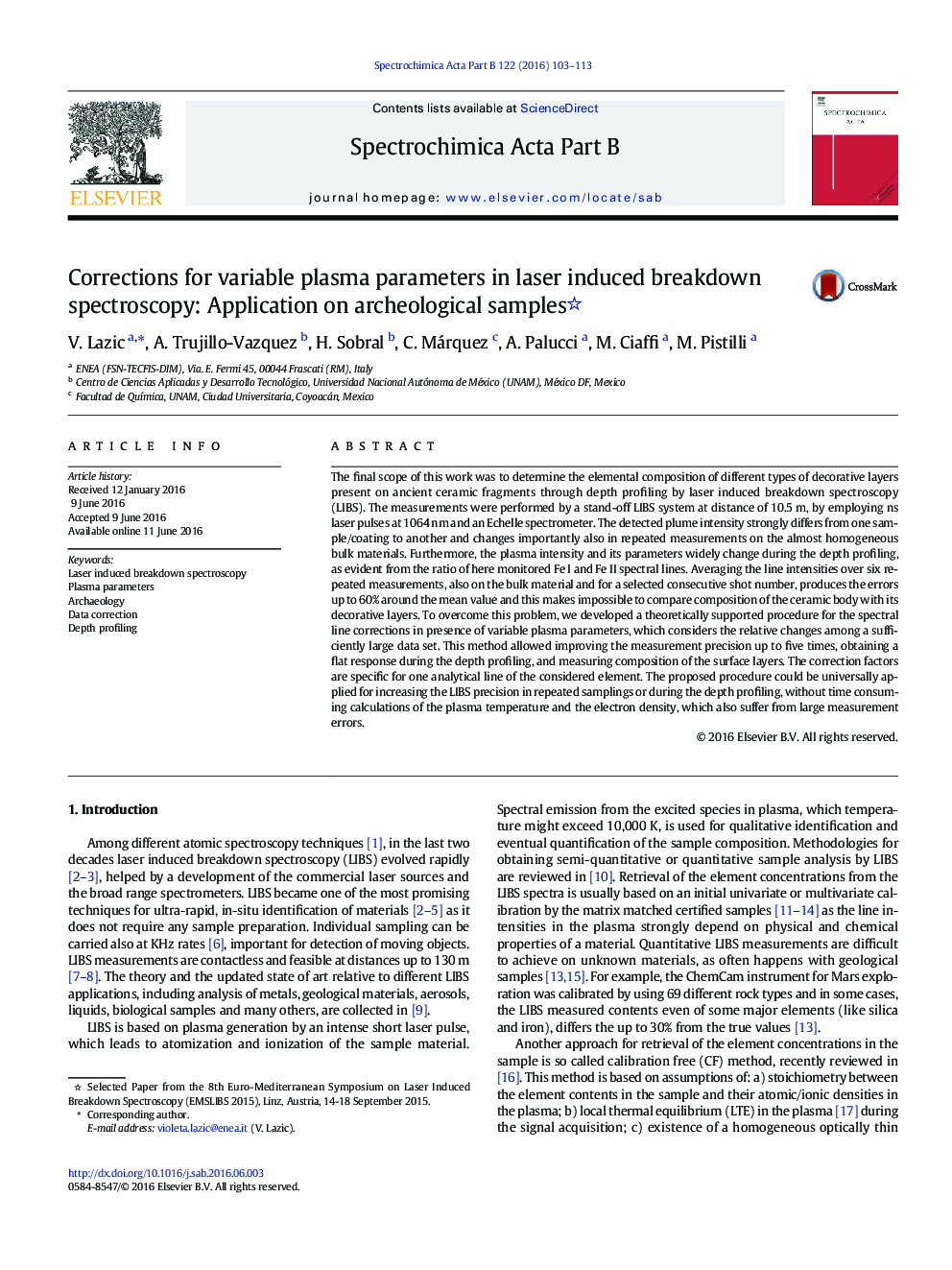| Article ID | Journal | Published Year | Pages | File Type |
|---|---|---|---|---|
| 1239559 | Spectrochimica Acta Part B: Atomic Spectroscopy | 2016 | 11 Pages |
•Variations of the plasma parameters in repeated LIBS sampling or in depth profiling reduce the precision.•Through easily measurable spectral values these variations might be inferred and corrected.•Here proposed data correction procedure was theoretically supported.•The LIBS precision was improved up to five times.•The corrected intensities are independent on the crater development.•The LIBS results are consistent with those obtained by other analytical techniques.
The final scope of this work was to determine the elemental composition of different types of decorative layers present on ancient ceramic fragments through depth profiling by laser induced breakdown spectroscopy (LIBS). The measurements were performed by a stand-off LIBS system at distance of 10.5 m, by employing ns laser pulses at 1064 nm and an Echelle spectrometer. The detected plume intensity strongly differs from one sample/coating to another and changes importantly also in repeated measurements on the almost homogeneous bulk materials. Furthermore, the plasma intensity and its parameters widely change during the depth profiling, as evident from the ratio of here monitored Fe I and Fe II spectral lines. Averaging the line intensities over six repeated measurements, also on the bulk material and for a selected consecutive shot number, produces the errors up to 60% around the mean value and this makes impossible to compare composition of the ceramic body with its decorative layers. To overcome this problem, we developed a theoretically supported procedure for the spectral line corrections in presence of variable plasma parameters, which considers the relative changes among a sufficiently large data set. This method allowed improving the measurement precision up to five times, obtaining a flat response during the depth profiling, and measuring composition of the surface layers. The correction factors are specific for one analytical line of the considered element. The proposed procedure could be universally applied for increasing the LIBS precision in repeated samplings or during the depth profiling, without time consuming calculations of the plasma temperature and the electron density, which also suffer from large measurement errors.
